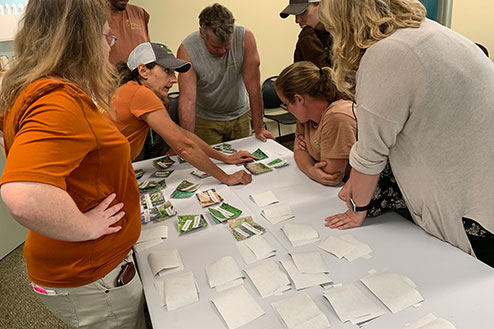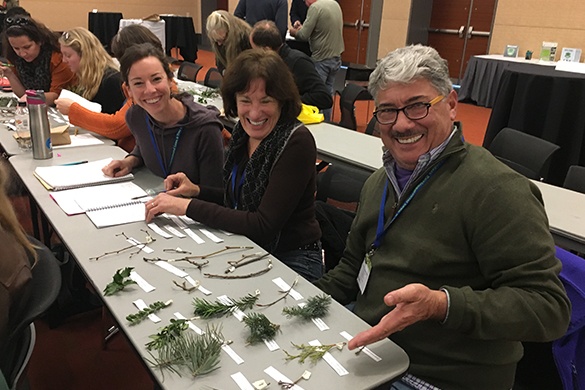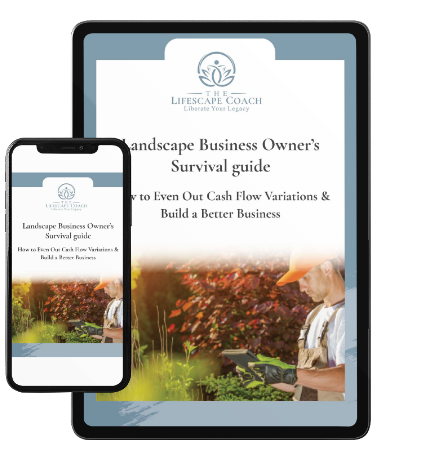How To Get The Best Out Of Your Landscape Employees
That familiar lament of landscape business owners and managers – “you just can’t get good help these days” – is more myth than reality. The truth is, there’s plenty of good help out there and workers who really do want to be engaged, supported, and appreciated. However, often the problem is that business leaders are so busy and distracted that they only give employees peripheral attention. Let’s not kid ourselves – employees notice when their concerns are pushed to the back and they’re not receiving feedback on their efforts and performance. Fortunately, there’s a better way to handle employee relations, it just takes a little effort.
Learn to engage comfortably
You, as an individual as well as a boss, need to figure out the best way to engage with your employees. What can you do that’s easy and comfortable for you and your workers that provides “touch points” on a regular basis to nurture relationships, encourage employees to engage, and show support for them? With a comfortable rapport established, it becomes easier to implement a more systematic, efficient way to provide input to employees and demonstrate support for their efforts and growth within the organization.

Here are 5 tips for engaging with landscape employees and improving performance:
1. Engage with EVERY employee
As a business that has to produce every day, landscapers need to get the best out of every employee and build teams that can work effectively together to “move mountains” for clients on their own. We may talk about “building teams,” but do we practice what we preach? I may be showing my New England roots here, but do you think Bill Belichick only interacts with Tom Brady? Of course not. He needs to engage with every member of the team to get the most out of each individual and optimize team performance.
2. Meet one-on-one with employees three times a year
Set aside time three times a year to meet individually with every employee. Discuss their experiences working for your company -- what works for them and what doesn’t. Learn what motivates them. These meetings should be less about what the worker should do and more about what they’d like to do. Employee motivation and growth don’t come by telling them to work harder. Self-motivation and growth happen by encouraging workers to establish personal goals and mentoring them on how to achieve them.
3. Build skills
One of the many benefits of engaging one-on-one with all of your employees is that it provides you with the opportunity to gauge the skills they possess both individually and collectively. This enables you to better deploy your workers and build skills to address weaknesses and even fears. For example, you may find you have some employees who are afraid of working around poison ivy. This can be used as an opportunity to train the team on the safe handling and removal of poison ivy, and developing procedures to work around it if necessary. This not only helps employees feel safe and be more productive, it also benefits the company by minimizing work delays. Skill-building doesn’t have to be some monumental project – sometimes simply providing a little knowledge will go a long way toward improving performance.

4. Share aspirations
One-on-one engagements with employees is the perfect opportunity to share aspirations with them. For you to listen to theirs and for them to hear from you where you’d like to take the company and how the employee can be a part of that journey.
It’s common for business owners to not want to share that kind of information with employees for several reasons:
- They believe it’s private information about the business that shouldn’t be shared with the rank-and-file
- As an owner, they’re not confident about their goals and their ability to achieve them
- They don’t want to get anyone’s hopes up
While these inclinations are understandable, they’re also counter-productive. Openly discussing goals with employees will help build support and boost chances for success. Sharing aspirations encourages participation by the entire team and builds motivation for all. It also reveals who’s dialed into the success of your business and who may be simply collecting a paycheck.
5. Now go ahead and do it.
Now that you know Points 1-4, you need to implement them. You have to schedule team and management engagements and set up your one-on-one meetings. The hard part is most of us did not get into the landscape business to manage people. However, when you sign up to be an owner and you hire people, you’re in the people management business, whether you like it or not.
Put engagement points on your 2019 calendar and plan on having your employee one-on-one meetings while your teams are still working during your active season. Don't wait until the end of the year. If possible, get midyear reviews done in the end of the third quarter of the year (July, Aug, Sept). This gives you time to work with employees on some of the changes you want to make and you get the benefit of these conversations and the information they provide while people are still coming to work every day.
At The Garden Continuum I have implemented three engagement points in the calendar – what some would call “reviews” – when I sit one-on-one with each of my staff: mid-to-late winter, the beginning of August, and late autumn just before closing.
When I first started doing this, I made the mistake of thinking of these strictly as performance reviews. They often focused on money issues and what I call the “shoulds”: “you should do this”….”you should do that.” I found these reviews were not as productive or helpful as they could be, so I made some changes. We now only talk about money during the summer meeting and I let my employees know that these meetings are for their benefit and encourage them to talk about their hopes, dreams, and goals.
One of the tools I use for my mid-season employee meetings is called “Keep-Stop-Start.” It requires them to do a little homework to self-assess their performance and engagement at the company, which they share in the meeting. This requirement helps them to come well-prepared and focus on themselves both personally and professionally for 45 minutes. As my gift to you, I have included this as a free download for anyone who wants to try it for their fourth quarter reviews.
Summary - Getting the best out of your landscape employees
In the end, this is all about actively engaging with your employees – all of them. Talk with them, ask them questions, share aspirations and ideas. The goal is to help them improve their performance and be happier, more productive employees. Happy, satisfied people are more productive people, that’s a fact! But this engagement time also an opportunity for you and your employees to collaborate and cooperate on making your business more successful – and that benefits everyone.
Landscape Business Owners Survival Guide




